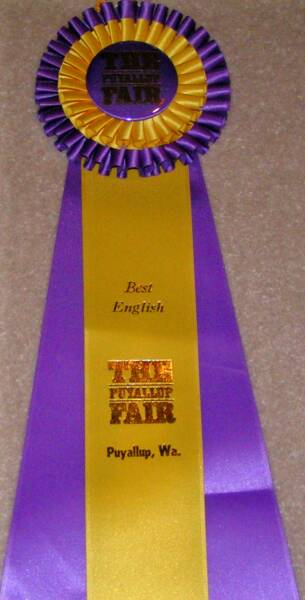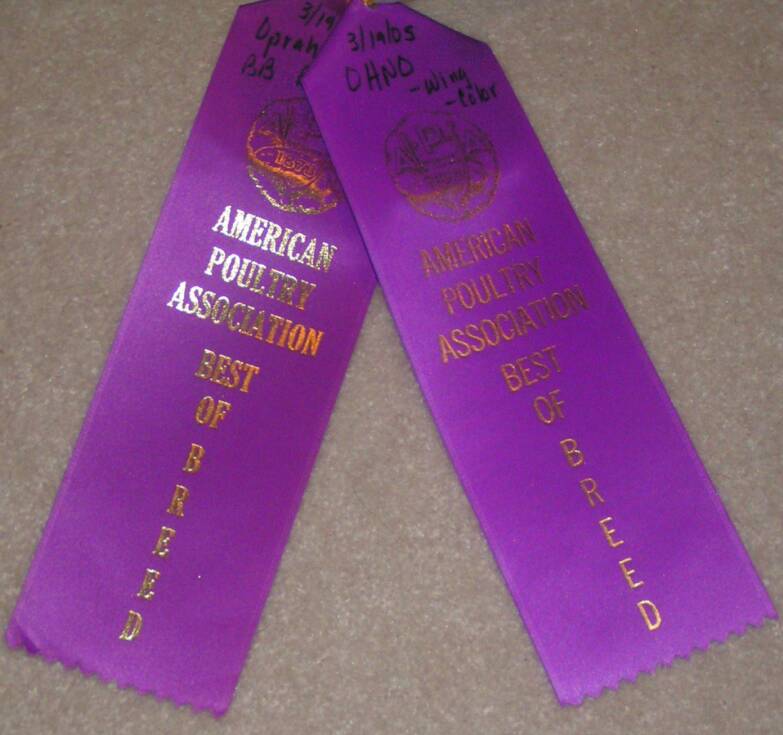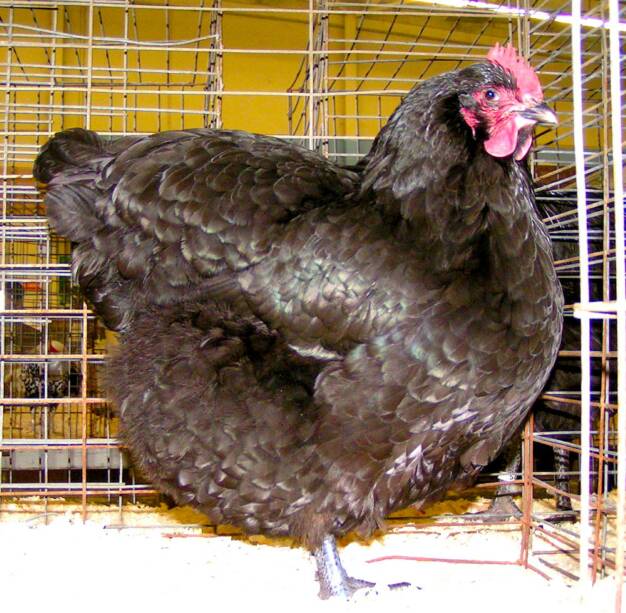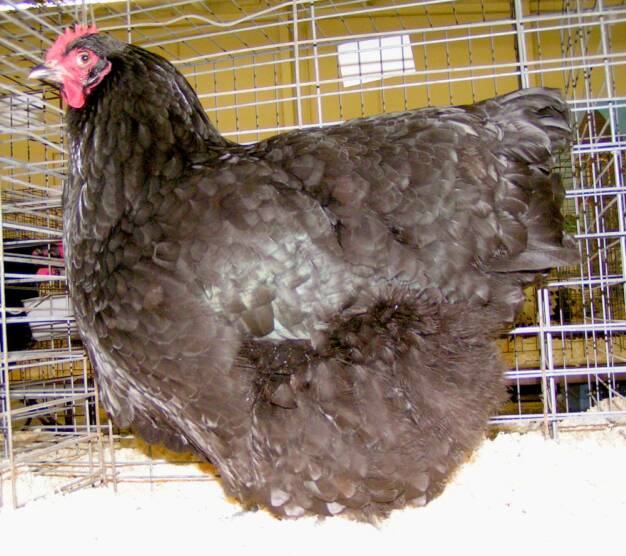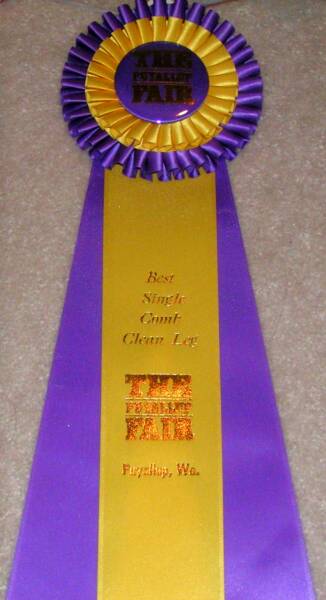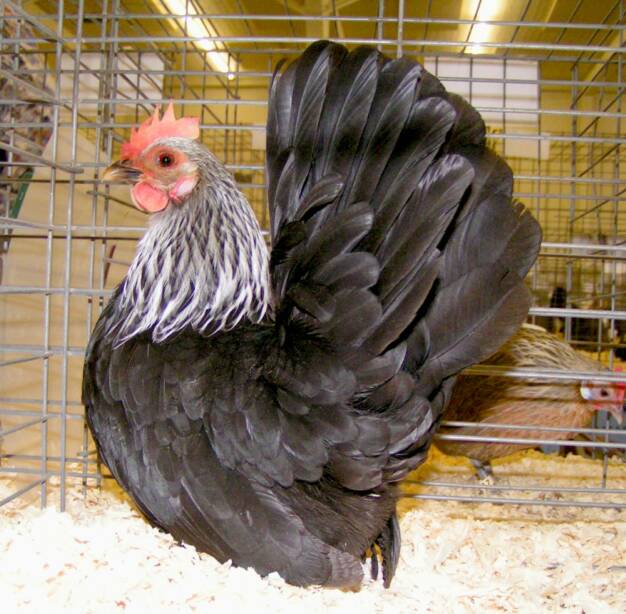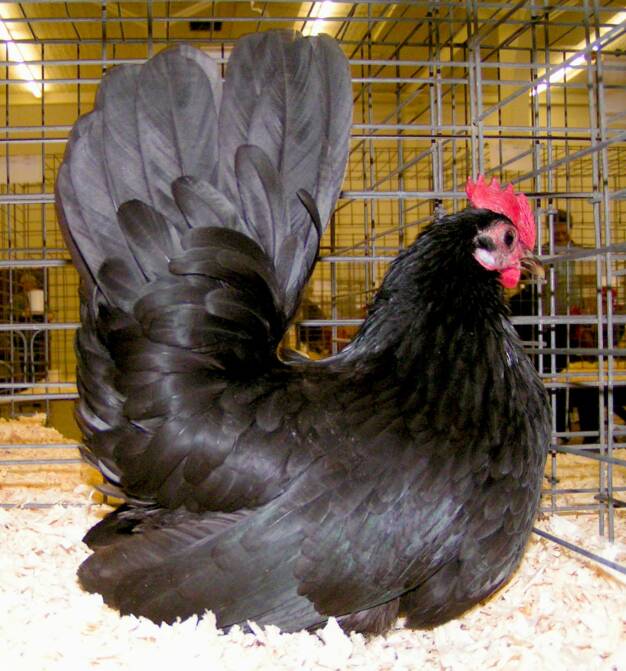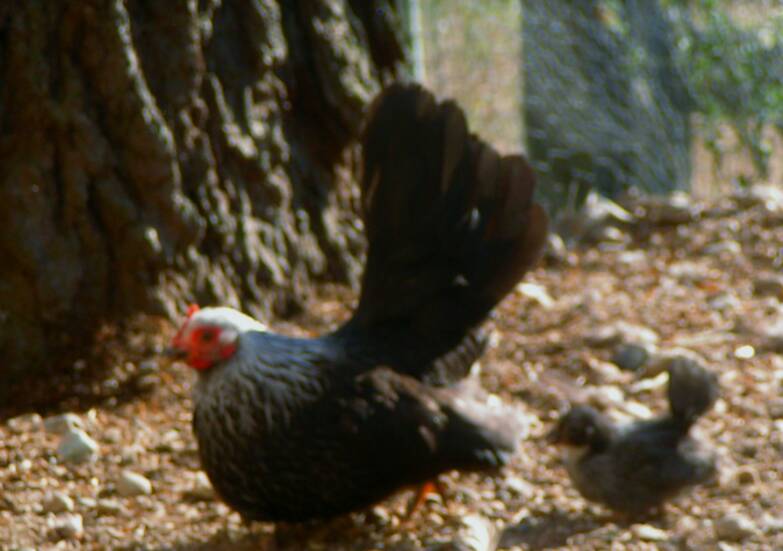Our Orpingtons
The Orpington was created by William Cook from Orpington, County of Kent, England.
Cook died in 1904 but not prior to creating 5 varieties of the large bird. We are all familiar with the Buff Orpington that was admitted into the "American Standard of Perfection" in 1902. The first color William Cook created was the Black Orpington admitted into the "American Standard of Perfection" in 1905 and in the same year followed by the White .
The surprise colors we aren't aware of also created by Cook were the Diamond Jubilee, a three-colored bird much like today's Speckled Sussex, and the Spangled, a black bird with white tipped feathers. Although very rare, these varieties can be found in Germany today along with the Red Orpington.
Other colors created include the Ermine or Columbian, the Cuckoo, both long extinct, and the Blue that was admitted into the Standard in 1923.
Oprah, one of our hens, at a show. She's been on Champion row many times and often best English losing only to our hen, Wendy.
Dual purpose birds make them great for the table and for year round egg production.
Roosters have quiet dispositions and are great "watch dogs" for their brood.
Wendy, a National Champion.
In a land where the traditional sword is needed to make any ceremonial dance complete it was natural that some breed should embody that shape in its feathers.
Most bantam breeds cannot be traced much further back then the early and middle 1800's. Japanese embroideries and paintings done 300 years ago depict the Japanese Bantam.
There are at present 16 standard color varieties of Japs to choose from and breeders all over the world working on color patterns.
Our Japanese
Some of our Champion hens......
Even at only at a few weeks of age, the sword tail is apparent. One of our National Champions with her first hatch.
".....if you want to get five show quality Japanese then you have to set 100 eggs."
Taken from an article
written by
Terry Wible
(past president of the JBBA)
We have stepped away from the show ring for now but are still raising show quality birds. They are enjoying their retirement and are busy with pest control in our pastures and raising babies. We occasionally have birds available for sale. We do not sell hatching eggs. We do not take orders for chicks.
